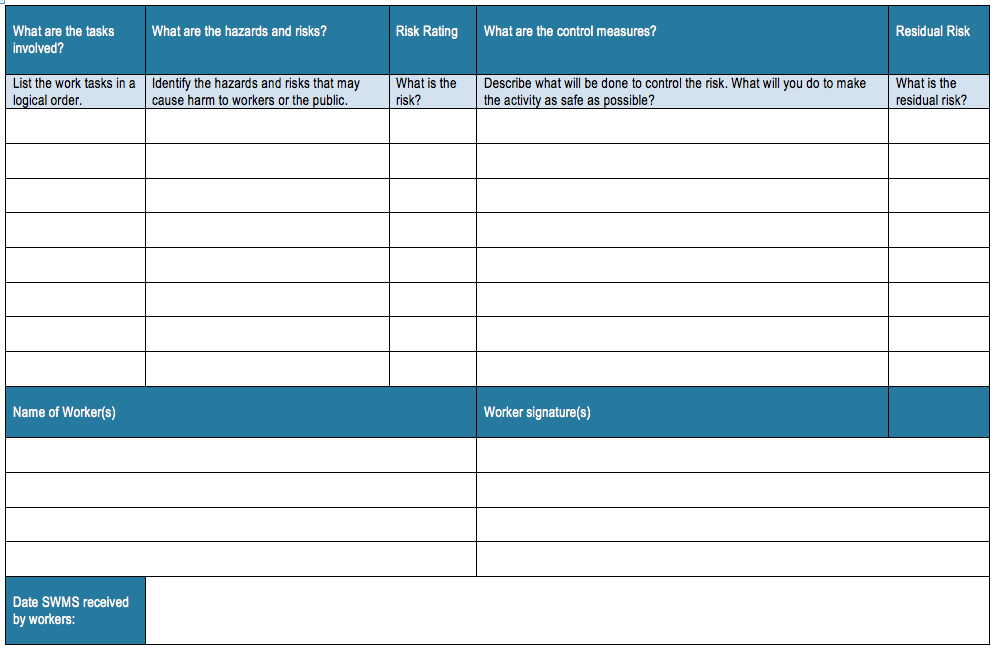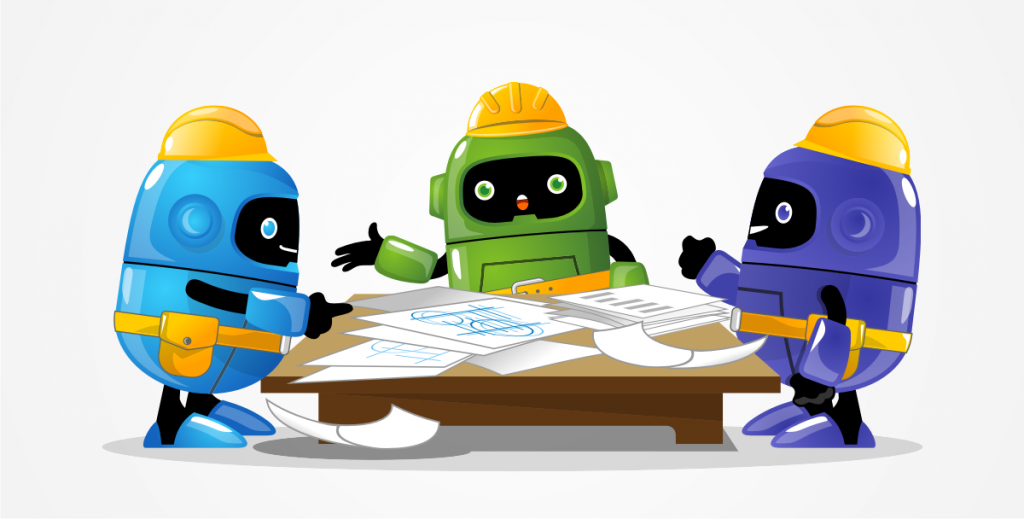3 Signs Safety Software Might Be The Solution For You
Safety software is a relatively new solution to an old problem. Have you ever thought to yourself, there has got to be a better way to stay complaint with safety regulations? Do you ever get frustrated that you have to fill out so many assessments and statements on paper. Do you find yourself missing things in your assessments because you are worried that it’s not in the right format?
These are just some of the frustrations that come with the process of staying compliant with safety regulations. It can have significant effects on your safety culture if you find the process of safety too difficult. If you have ever ran into any of the above, it might be time to consider finding a solution before it becomes too much of a headache that safety goes out the window and all your effort is spent just to be compliant.
In this article we will cover in depth 3 signs that it might be time to consider utilizing safety software before your safety is ignored for compliance.
You’re worried about compliance incase of an incident
Running a business is no easy task. It’s like juggling 10 things at once. When things are going well, it’s a great feeling. But it only takes one slip up or incident to cause everything to come crumbling down. The stress and anxiety of a WHS incident happening in your business is enough to keep anyone up at night. On top of that, if you know you might get slapped with a fine after the incident you’ll always be stressed or worse, you’ll delay reporting an incident. This can lead to huge fines and even jail time. No one wants that.
Safety compliance in the modern day is no simple task. There are a lot of regulations and legislation that you must adhere to in your day to day business. This can become quite a headache and adds to the stress of making sure you have ticked all the boxes. Or worse, leads you to ignoring your requirements and hoping that an incident doesn’t occur. As we have covered in a previous article, incidents happen to even the best of employers who are proactive with safety, its simply the reality of probability. If there is a chance, eventually it will happen.
Ask yourself this. If there was an incident at your workplace tomorrow and it lead to an inspection, would you be confident you would pass? Have you got a solid and refined risk assessment process in place to identify, assess and control risks in your workplace?
If the answer is not a confident yes then it might be time to look at solutions. Safety software like our platform SafeWorkPro allows you to focus on your process more while making the document compliance side of things a worry of the past. While SafeWorkPro won’t solve all of your safety worries, it will help you be more effective with your time so you can spend less time filling out forms and more time focusing on the actions that lead to a safer workplace. We have talked about how your process is more important than your documents in a previous article. In the eyes of the law, the concern is about what you actually do to keep people safe.
If you want to spend more time on safety and less time on the books, then safety software might be the solution for you.
Safety software makes documentation simple and easy
How long does it take you to complete a risk assessment from start to finish? What about a SWMS? Do you find it difficult to complete documents because of all the back and forth that is required between the site, office and in between your workers? If your documentation process is top notch and you have no issues with filling out lengthy paper documents then this might not apply to you. But for those that get frustrated with how much time away from work they have to take to complete documents, this one might be for you.
When the bottle neck for starting a job is the paperwork you need to complete for safety compliance it can become frustrating. It can sometimes feel like too much time is being wasted on paperwork when you could be working. This can lead to rushing through it which defeats its purpose. It also means that you are more likely to skip the processes that really matter to keep people safe.
If you are on a site that needs a SWMS and something changes that requires you to re-evaluate your SWMS, the process starts again and the tools are down until it is done. With safety software, the process of completing documentation is significantly easier. In principle, it is the same but in practice you’re saving time that would otherwise be spent filling a document and running around to get it signed. SafeWorkPro’s simple form based builder allows you to build custom documents which are super simple for your workers to complete on site when needed.
Save the hassle of the back and forth trying to get your documents read and signed by those on site. Have workers fill and sign documents from anywhere on site and have them submitted to the cloud for you to review from any location. SafeWorkPro even lets you get notifications when certain actions happen like a risk rating on a risk assessment matrix being too high or an incident is submitted. SafeWorkPro can help you save time on compliance and let’s you focus on what you do best.
Safety software helps you find old documents quick
Ask yourself this, can you find your risk assessment or SWMS from a job 2 years ago? If you were audited, could you produce it? This is something that isn’t obvious until it is an issue and by then it’s too late. How much of an impact on your day to day operations would a surprise audit have? Would you need to go digging through the back office folders to find the documents required? What a headache!
Even while you are on site, your documents like a SWMS need to be available for everyone to see. While they are there, they are likely to get damaged or degraded by weather. Sometimes, by the time they get stored for safe keeping they are almost falling apart.
With the safety of cloud document storage, SafeWorkPro can store all of your important documents online forever. With all of your documents in one place and neatly organized it’s super simple to find the documents you need, even if they are from years ago. Our software also makes audits quick and easy with next to no disruption in your operations. Export all of the data from your SafeWorkPro site for review without having to spend hours digging through folders, photocopying and physically delivering documents.
Conclusion
If any part of this article resonates with you, it might be time to consider trying out a better solution to using a manual safety process. Beyond just the convenience, SafeWorkPro can help you focus your time on the actions that truly make people safe, not just the actions that make you compliant. At the end of the day, that is what you will be judged on if you have an audit or investigation. Documentation is required of course, but that is simple the surface level when it comes to safety.
If you want to learn more about how SafeWorkPro could help you in simplifying your WHS, reach out to our friendly expert staff for a free, no obligation live demo.
Asbestos Risk Assessment
Asbestos disposal is a type of high risk construction work that comes with its own OHS risk assessment form. Like most examples of risk assessment forms, there is no standardised safe work method statement template applicable for every condition. But there are many basic steps that serve as the starting block for any SWMS asbestos removal job.
Firstly the proper documentation must be prepared. This step obviously involves the completion of a SWMS by the person conducting a business or undertaking (PCBU). The SWMS must be available onsite and kept by the PCBU until all high risk work is complete. A licensed asbestos removalist is responsible for the asbestos removal control plan, which should also be available for everyone on the worksite. Lastly, any person who undertakes work in this area, including asbestos testing, must have adequate training through the specified VET course for assessors, or through a tertiary education in OHS, science, building, construction or environmental health.
The next step is the asbestos register. Each state and territory has its own regulatory standards for the registration of asbestos removal or any asbestos related work. For asbestos removal Brisbane, for example, the WHSQ must be informed and PCBU’s must:
- Know how to identify asbestos or any asbestos-containing materials (ACM) on site including friable asbestos
- Keep and update a dated register of the location of any ACM, risk assessments, control measures and the details of the competent person who undertakes the assessment
- Review the asbestos register at least once every five years
Although each state has different regulatory authorities surrounding asbestos OHS issues in the workplace, they are all based on the same framework detailed by Safe Work Australia. SafeWorkPro has provided a free SWMS example for asbestos removal to help your worksite get quick, safe and compliant today.
Risk Assessment Format
Learning how to perform a risk assessment does not have to be a painful experience. It’s all about simplicity. The best risk assessment format is one that remains basic enough so that anyone can easily understand it. Training risk assessment programs are recommended for more complex jobs but for the simpler worksites these tips will teach you how to write a risk assessment.
1: A simple risk assessment works best
A decent risk assessment guide will tell you that complicated language will detract from the overall quality of risk assessment documents.Keeping it short, sharp and too the point will save a lot of headaches. A simple risk assessment is one that uses plain English and considers these factors:
• How well the audience reads
• Information that’s presented in way which anyone can understand
• How overly technical language can confuse readers
• That risk assessments and risk management plans should not take any longer than 16 minutes (why 16 mins exactly? Find out here)
2: Generic risk assessments save time
Using straightforward, simple language not only makes it easier for any reader to understand the risk assessment document but also saves time. High risk construction work is busy business so workers do not have a lot of time on their hands. Clear action words written in an active tone on a step by step basis will simplify the entire risk assessment process and let workers get back on the job quickly.
• Active tone: Remove all rubbish
• Passive tone: All rubbish must be removed
3: Use a risk analysis table
Tables are a great way to clearly break down data and different risk management methods. A risk analysis table breaks the risk management framework into clearly defined steps that workers can go through at their ease. See the below image for an example.

This is all well and good but ultimately even the most effective paper-based risk assessment process is flawed when compared to the digital alternative. To learn about the more efficient and cost-productive risk assessment software, click here.
The Software-Based Approach to a Dynamic Risk Assessment Definition
Any type of construction site risk assessment will have to contend with quickly changing circumstances that may alter or amplify workplace hazards. One of the most effective risk mitigation techniques has proven to be the use of a dynamic risk assessment to address the continually changing nature of high risk construction work.
There are various types of risk management that aim to provide workers and managers alike with the tools and techniques needed to address rapidly changing work environments. But for Australian construction businesses, the dynamic method is best suited to meet the strict demands of health and safety law. Here at SafeWorkPro, we’ve implemented a dynamic approach in the next update to our risk analysis software
But what exactly is a dynamic approach to risk assessments?

There are 5 stages of risk assessment that are incorporated into the dynamic approach (as outlined by Health + Safety at Work).
1: Conduct a risk evaluation of the situation or worksite
Consider the following factors:
- What is the current understanding of the workplace or situation? Are there any other previously conducted risk assessments to evaluate?
- What are the specific tasks required to be undertaken and what are the hazards associated with each?
- What is the risk level associated with each task and who is most likely to be affected?
- What resources are available that could assist in minimising risk?
2: Choose what systems of work will be used.
- What is the most appropriate system of work to be practically used?
- Has the selected system of work been based on adequate planning?
- Are the personnel conducting the work adequately trained in the task being carried out?
3: Assess the selected systems of work.
Consider the following factors:
- Do the risks involved outweigh the benefit of conducting work?
- Are all individuals involved aware of their specific role and responsibilities?

- Are the safe operating procedures well understood by all involved parties and/or individuals?
- If the answer to these questions is ‘no’, then proceed to step 4. Otherwise work can begin.
4: Implement additional controls.
Consider the following factors:
- Can any additional risk control measures be implemented? (eg PPE or specialist equipment)
- What level 3 risk management processes – as outlined in Safe Work Australia’s codes of practice – can be applied as well?
- Can any of these additional controls be used in conjunction with other measures?
4: Review control measures and systems of work.
Consider the following factors:
- If risks remain, do their cost outweigh the benefit of continuing work?
- Are there any safe, reasonably practicable alternatives to the current system of work or implemented control measures?
These are the fundamental steps behind a dynamic risk assessment but as you can see, there are many points to consider. Implementing a dynamic approach to any construction job can come at the cost of productivity. Both workers and managers alike understand that conducting risk assessment – dynamic or not – takes time which when added up over the course of a working year, can result in a large strain on resources. However there are ways to reduce this cost while promoting safe work practices.
This comes in the form of risk analysis software like that used in SafeWorkPro. Our system creates digital risk assessments and safe work method statements that can be updated in real time by workers, giving it a significantly powerful dynamic nature. This in turn not only decreases the time cost of conducting dynamic risk assessments, but also achieves this is a way that promotes workplace safety. For more information, read about what is SafeWorkPro.





